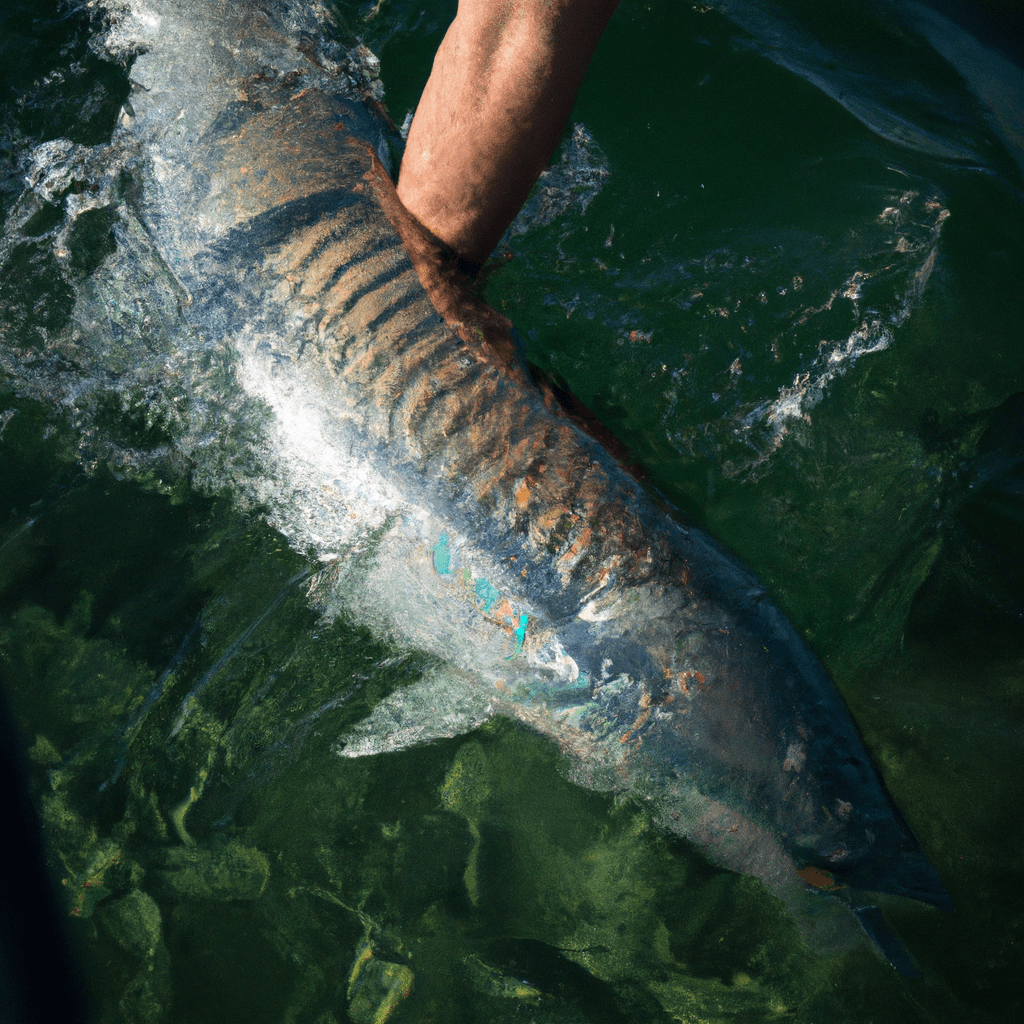Imagine yourself on a pristine coastline, the sun casting golden hues across the water. You reel in a magnificent tarpon, its silver scales shimmering in the light.
But before you revel in your catch, consider the ethical approach to catch and release.
This article will guide you through responsible handling techniques, best practices for releasing tarpon safely, and the conservation efforts in place to protect their populations.
Join us in educating fellow anglers on the importance of ethical catch and release practices.
Understanding the Importance of Catch and Release
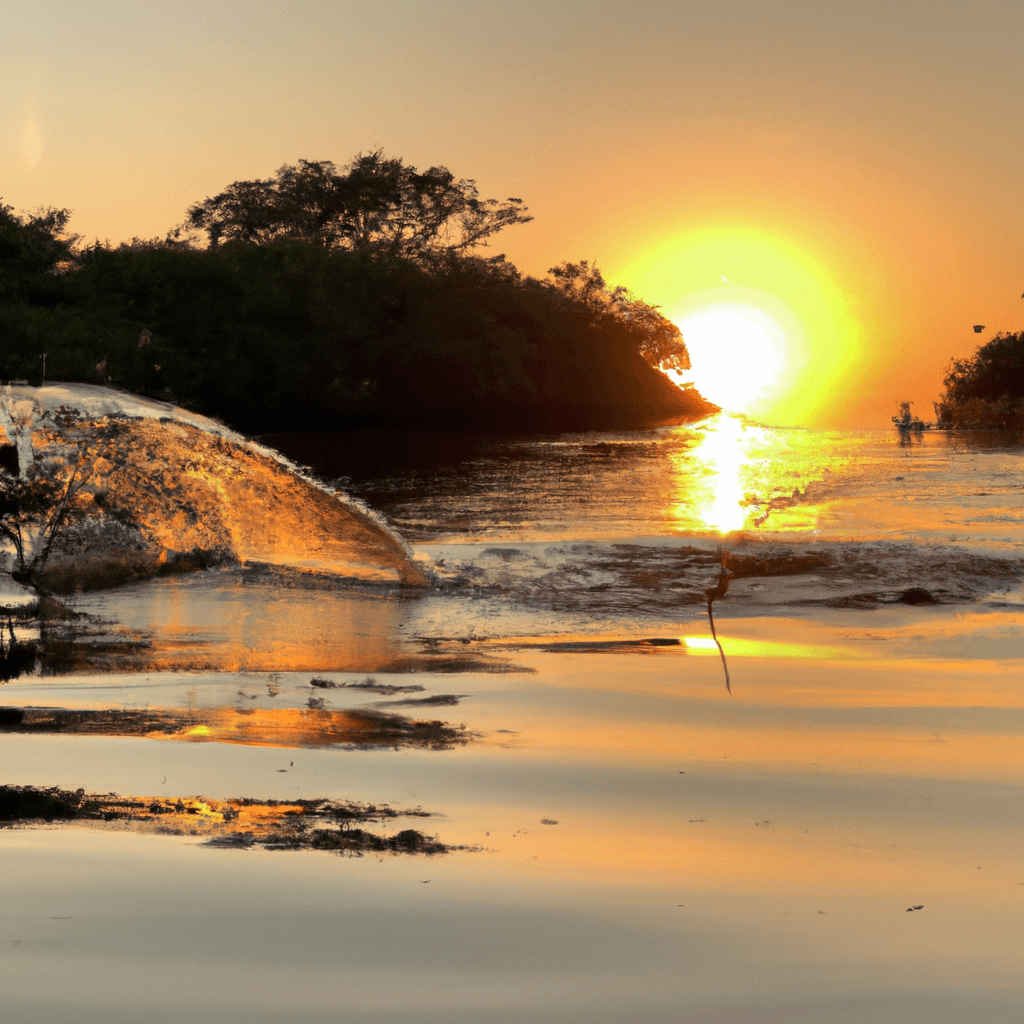
You should always understand the importance of catch and release when it comes to tarpon fishing. This practice is crucial for the sustainability of the tarpon population and the overall health of the ecosystem.
Tarpon, a highly sought-after game fish, play a significant role in maintaining the balance of marine ecosystems. By releasing tarpon after catching them, you give them the opportunity to reproduce and ensure the continuity of the species. Additionally, catch and release helps preserve the genetic diversity of tarpon populations, which is vital for their long-term survival.
It also promotes sustainable fishing practices, as it reduces the pressure on the tarpon population and allows for their continued enjoyment by future generations. Understanding the importance of catch and release isn’t only ethical but also essential for the conservation of tarpon and the health of our oceans.
Responsible Handling Techniques for Tarpon
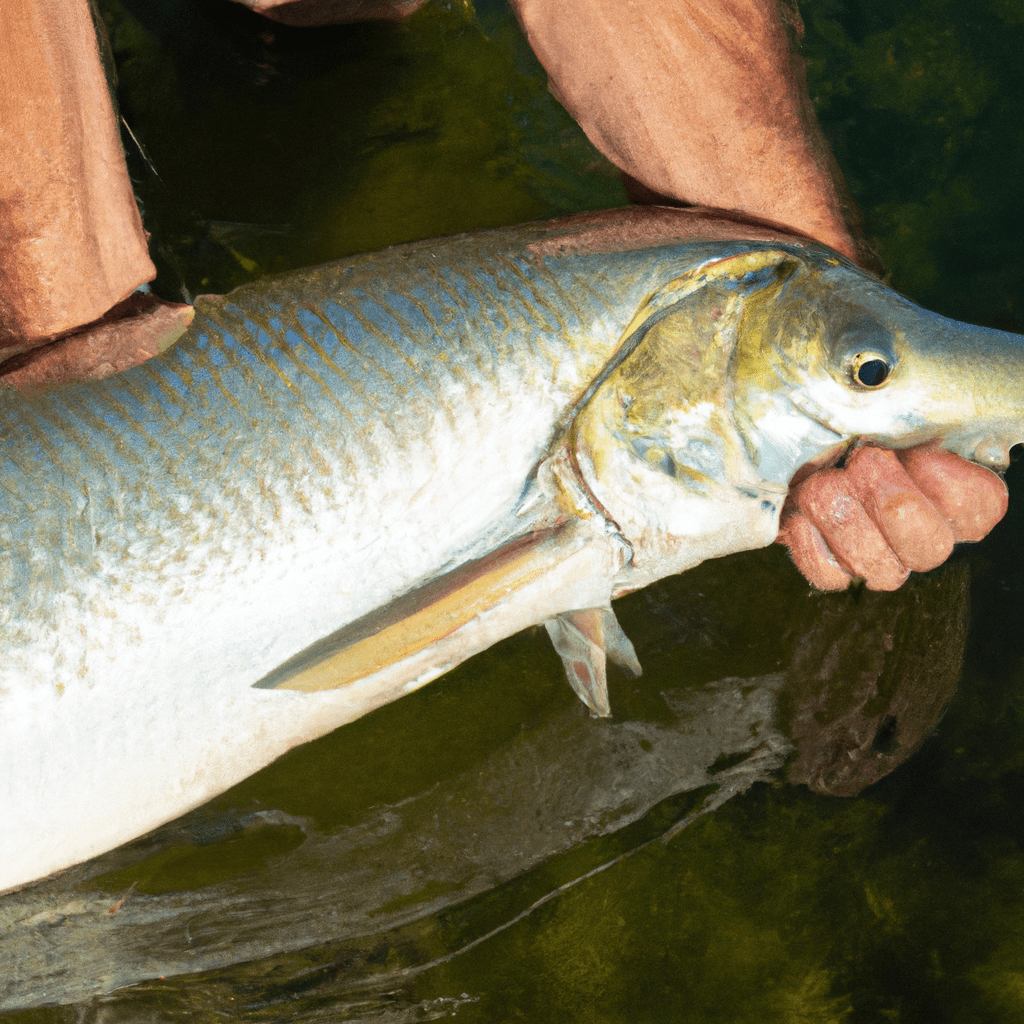
To ensure the well-being of tarpon during catch and release, it’s essential to follow responsible handling techniques. Proper handling techniques not only minimize stress on tarpon but also increase their chances of survival after release.
Here are three important tarpon handling techniques that can help reduce stress on these magnificent fish:
- Use barbless hooks: Barbless hooks are easier to remove, causing less damage to the tarpon’s mouth and reducing the time it takes to release them.
- Keep the fish in the water: Whenever possible, keep the tarpon in the water during the handling process. This helps maintain their oxygen levels and prevents unnecessary stress.
- Minimize contact: Limit the amount of time you handle the tarpon and avoid touching their sensitive gill plates. This reduces the risk of injury and infection.
Best Practices for Releasing Tarpon Safely
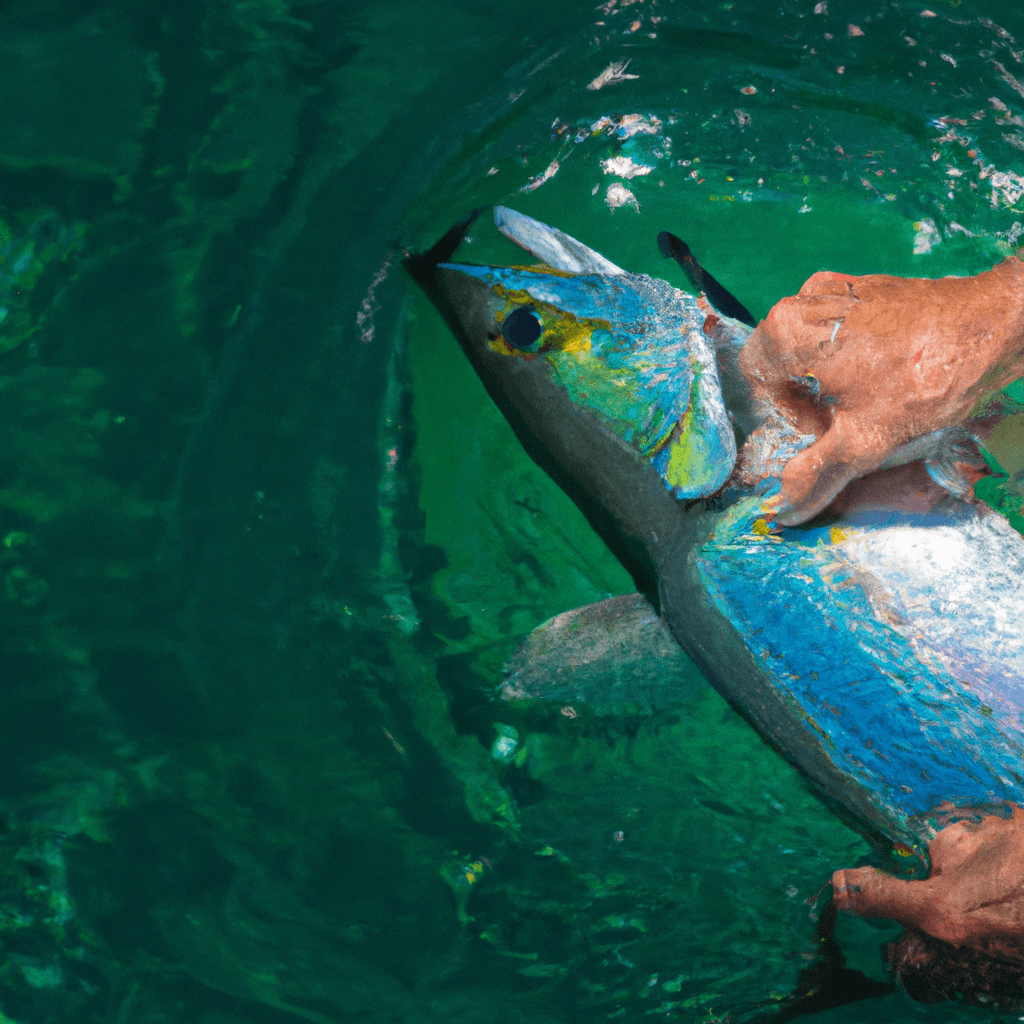
When releasing tarpon safely, it’s important to follow best practices to ensure their well-being and survival. Ethical fishing practices emphasize the use of proper release techniques to minimize stress and harm to the fish.
Firstly, it’s crucial to handle the tarpon with wet hands or gloves to protect their delicate skin and remove any excess slime. Avoid touching their gills or eyes, as these are sensitive areas.
Secondly, use barbless hooks or flatten the barbs to make it easier to release the fish quickly and with minimal damage.
Lastly, minimize the time the tarpon spends out of the water. Keep the fish in the water as much as possible during the unhooking process and use a release device, such as a dehooking tool or a knotless rubberized net, to safely release the tarpon back into its natural habitat.
Conservation Efforts to Protect Tarpon Populations
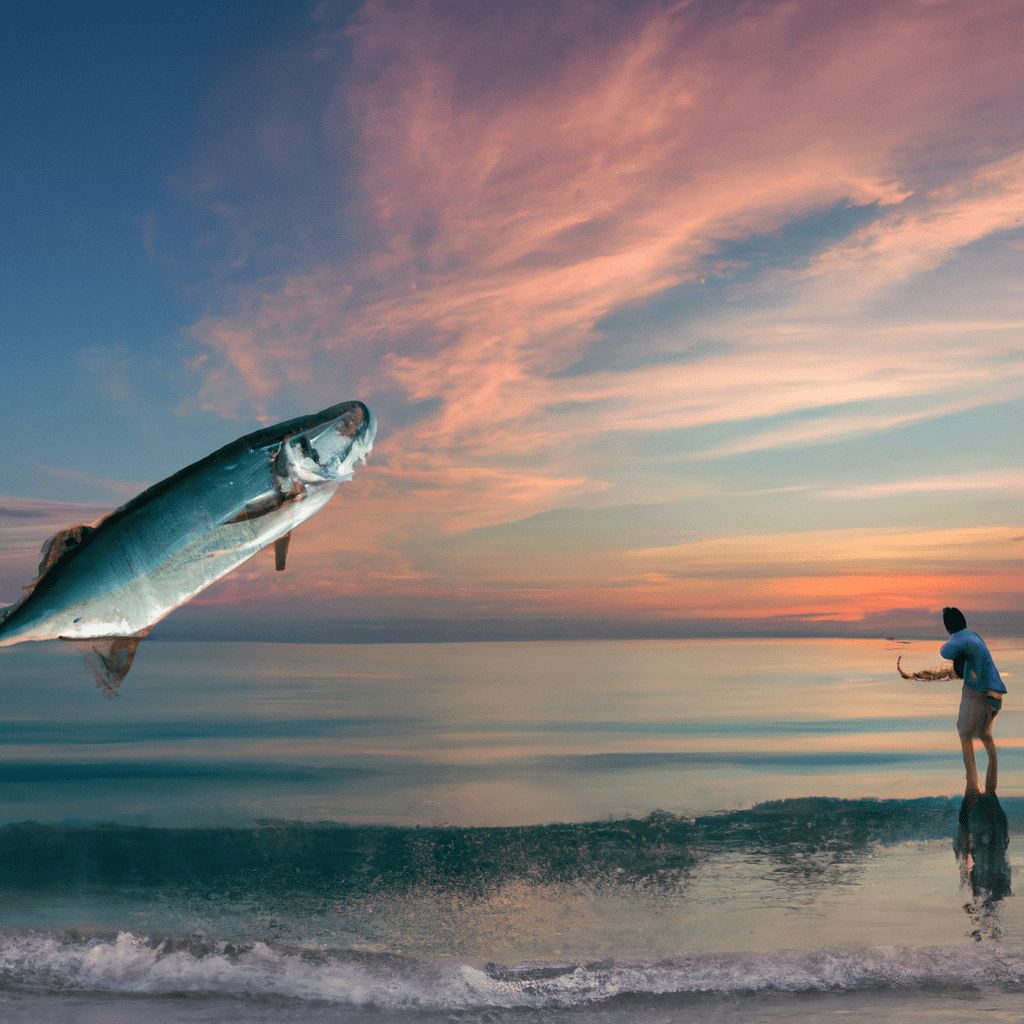
Protecting tarpon populations requires actively supporting and participating in conservation efforts. By implementing sustainable fishing practices and preserving their natural habitat, we can ensure the long-term survival of this iconic species.
Here are three key conservation efforts that play a crucial role in protecting tarpon populations:
- Implementing size and bag limits: Setting regulations on the minimum size and maximum number of tarpon that can be harvested helps prevent overfishing and allows for the reproduction and growth of the population.
- Promoting catch and release practices: Encouraging anglers to release tarpon unharmed after catching them can significantly reduce mortality rates and increase the chances of survival for these magnificent fish.
- Supporting habitat preservation initiatives: Protecting the habitats where tarpon spawn, feed, and grow is vital. This includes conserving coastal estuaries, wetlands, and seagrass beds that serve as nurseries and provide essential resources for tarpon survival.
Educating Fellow Anglers on Ethical Catch and Release Practices
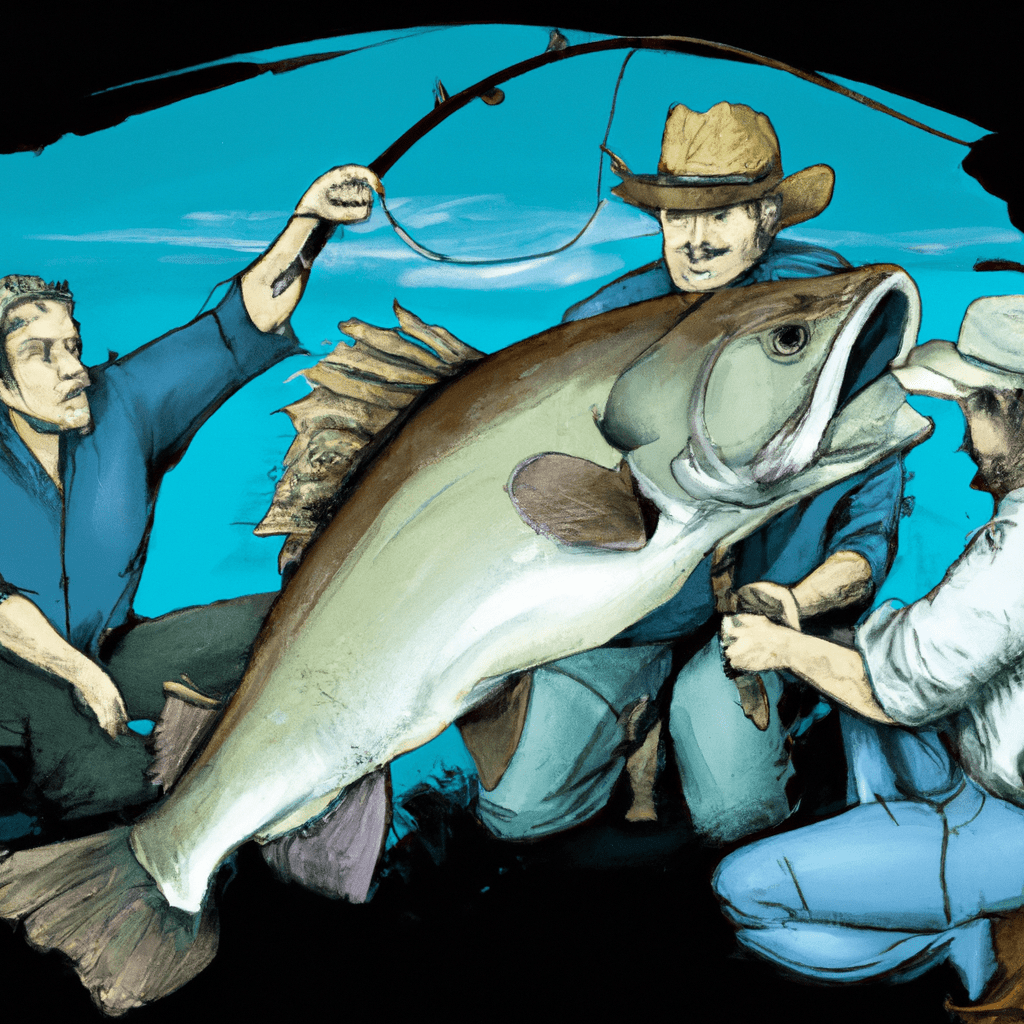
It’s crucial that you actively educate fellow anglers on the importance of ethical catch and release practices to ensure the sustainability of tarpon populations. Ethical fishing involves techniques that minimize harm to the fish and their habitats. By educating others, you can help spread awareness and promote sustainable angling practices.
One important aspect of ethical catch and release is using barbless hooks, which can reduce the risk of injury to the fish. It’s also crucial to handle the fish with wet hands or gloves to prevent damaging their protective slime layer.
Providing information on proper fish handling techniques, such as supporting the fish horizontally and avoiding excessive handling or squeezing, can go a long way in ensuring their survival after release.
Frequently Asked Questions
What Are the Potential Negative Impacts of Catch and Release Practices on Tarpon Populations?
Catch and release practices can have potential negative impacts on tarpon populations. The effectiveness of catch and release in preserving the ecosystem can vary. It’s important to consider the long-term consequences and ensure responsible fishing practices.
How Can Anglers Ensure They Are Using the Appropriate Gear and Tackle to Minimize Harm to Tarpon During Catch and Release?
To ensure you’re using the appropriate gear and tackle to minimize harm to tarpon during catch and release, it’s crucial to take on your angler responsibility. Make ethical choices by researching and selecting gear that protects the fish.
Are There Any Specific Guidelines or Regulations in Place for Catch and Release Practices When Targeting Tarpon?
When targeting tarpon, it’s important to follow specific guidelines and regulations for catch and release. Ensure you are familiar with local laws and regulations to minimize harm to the fish and preserve their population.
What Are Some Common Misconceptions About Catch and Release Practices for Tarpon?
Common misconceptions about catch and release practices for tarpon include thinking that the fish don’t feel pain or that it doesn’t impact their survival. However, research shows that improper handling can harm their chances of survival.
Is There Any Evidence to Suggest That Catch and Release Practices Can Help in the Recovery of Endangered Tarpon Populations?
There’s evidence suggesting that catch and release practices can aid in the recovery of endangered tarpon populations. It’s important to consider the ethical approach to catch and release to ensure the species’ long-term survival.

